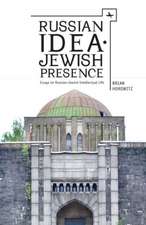Jewish Topographies: Visions of Space, Traditions of Place
Autor Julia Brauch, Anna Lipphardten Limba Engleză Paperback – 11 noi 2016
| Toate formatele și edițiile | Preț | Express |
|---|---|---|
| Paperback (1) | 489.26 lei 6-8 săpt. | |
| Taylor & Francis – 11 noi 2016 | 489.26 lei 6-8 săpt. | |
| Hardback (1) | 855.59 lei 6-8 săpt. | |
| Taylor & Francis – 19 sep 2008 | 855.59 lei 6-8 săpt. |
Preț: 489.26 lei
Nou
Puncte Express: 734
Preț estimativ în valută:
93.63€ • 97.39$ • 77.30£
93.63€ • 97.39$ • 77.30£
Carte tipărită la comandă
Livrare economică 14-28 aprilie
Preluare comenzi: 021 569.72.76
Specificații
ISBN-13: 9781138254299
ISBN-10: 1138254290
Pagini: 392
Dimensiuni: 156 x 234 x 21 mm
Greutate: 0.45 kg
Ediția:1
Editura: Taylor & Francis
Colecția Routledge
Locul publicării:Oxford, United Kingdom
ISBN-10: 1138254290
Pagini: 392
Dimensiuni: 156 x 234 x 21 mm
Greutate: 0.45 kg
Ediția:1
Editura: Taylor & Francis
Colecția Routledge
Locul publicării:Oxford, United Kingdom
Notă biografică
Julia Brauch is a political scientist and Anna Lipphardt and Alexandra Nocke are both cultural anthropologists. They were all members of the research group MAKOM at the University of Potsdam, Germany, which between 2001 and 2007 focused on the meaning of place and space within Jewish civilization.
Recenzii
'Space is at the center of Jewish existence. Implicit in the historical wanderings through Diaspora is the yearning to place - lost, discovered, and constructed. By drawing upon classical theories and fresh new paradigms, this excellent volume demonstrates the intensity of the desire for place in Jewish societies and the ability of place to make time tangible.' Dan Ben-Amos, University of Pennsylvania, USA 'The spatial turn has taken a leap ahead in Jewish Topographies. Responding to a powerful historicist tradition in Jewish Studies, the contributors spatialize the historical narrative by exploring the creative and often conflict-filled production of Jewish spaces, places, and territorial identity. The viewpoint is decidedly global, insightfully contemporary, and refreshingly critical.' Edward Soja, UCLA, USA 'The idea of Jewish topography and the spaces and places -- physical and metaphysical -- in which Jews live, dream and interact forms the basis of a fascinating new book.' Jewish Federation of the Berkshires '...Jewish Topographies is one of the most profound and far-ranging contributions to interdisciplinary approaches to Jewish studies (many of its essayists place the latter in creative yet cogent conversation with architecture, cultural studies, anthropology and other disciplines) to appear in years, and its editors are to be congratulated for assembling such a vibrant collection of innovative scholarship. Anyone with a scholarly (or even casual), interest questions raised by historical commemoration, memory, tourism, anthropology, history, or spatial studies will strongly benefit from these lively and accessible investigations of the symbolic hierarchies and identities invested in place.' Ranen Omer-Sherman, University of Miami, USA '...an unequalled pioneering effort to institutionalize the engagement with Jewish place and space from an interdisciplinary platform.' Association for Jewish Studies 'Jewish Topographies goes far beyond geography. It
Cuprins
Exploring Jewish Space; I: Construction Sites; 1: A Hybrid Place of Belonging; 2: “Eruv” Urbanism; 3: From State-Imposed Urban Planning to Israeli Diasporic Place; II: Jewish Quarters; 4: Ghetto Gardens; 5: The Mellah of Fez; 6: Religious Microspaces in a Suburban Environment; 7: Altering Alternatives; III: Cityscapes and Landscapes; 8: Poland; 9: A View of the Sea; 10: Desert and Settlement; 11: Jews and the Big City; IV: Exploring and Mapping Jewish Space; 12: Travel and Local History as a National Mission; 13: Taking Distance; 14: Tales of Diaspora in the New Fluid Atlas of Virtual Place; V: Enacted Spaces; 15: Foodscapes; 16: The Buena Vista Baghdad Club; 17: Mini Israel; Epilogue; 18: Virtual Jewish Topography
Descriere
Grounding a range of global case studies from past and present within a theoretical framework of the 'spatial turn', it explores innovative metholodological approaches that help to map Jewish topographies, thereby offering a fascinating new perspective on Jewish places in their diversity and multi-dimensionality.













